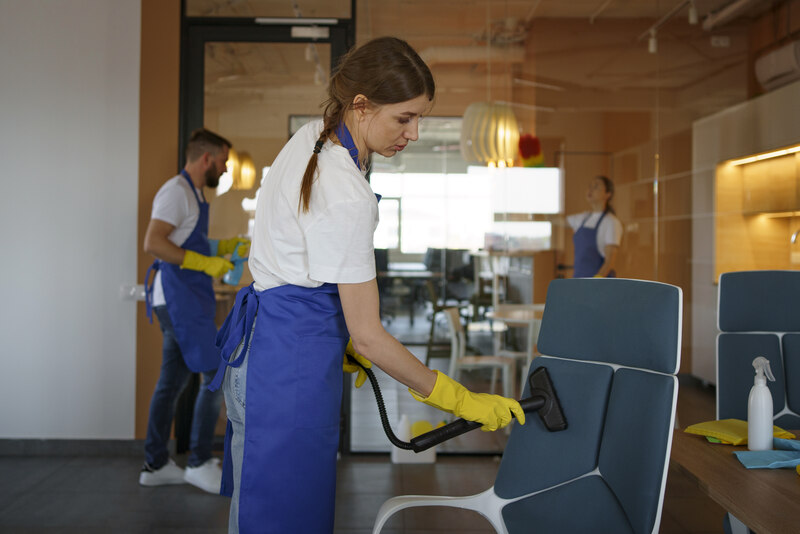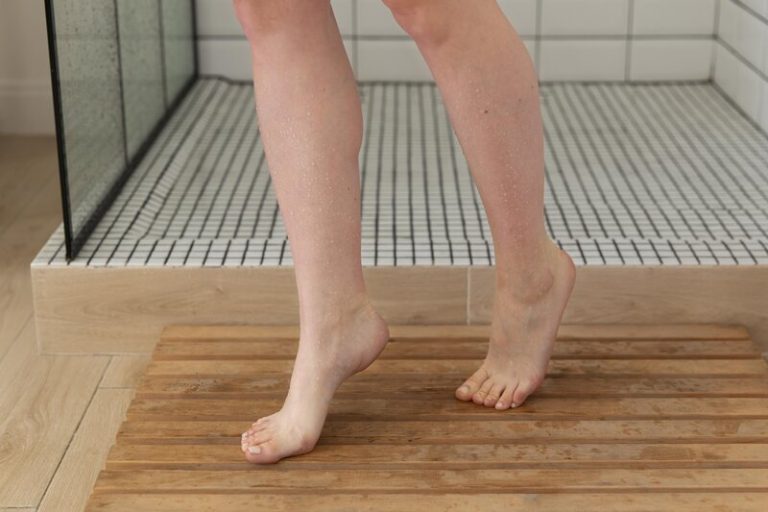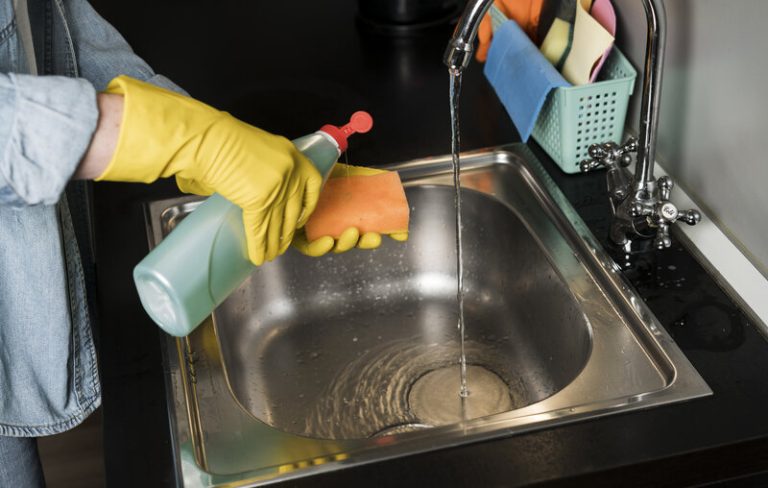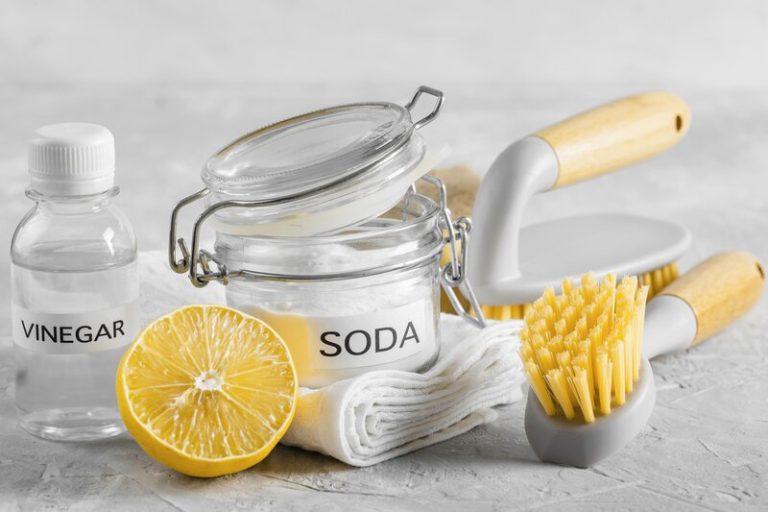Do you ever stop to think about the cleanliness of your office chair? From fabric to leather to mesh, different types of office chairs require specific cleaning methods to maintain their appearance and longevity. Therefore, it is important for you to understand how to clean office chair.
In this article, we will explore the importance of cleaning your office chair, the different types of chairs, the basic steps to clean them, how to maintain their cleanliness, and tips for dealing with tough stains.
Let’s dive in and learn how to clean office chair to make it look fresh and clean!
The Importance of Cleaning Your Office Chair
Before diving into how to clean office chair, it’s good to know why it’s important to do so.
Cleaning your office chair is crucial for maintaining a hygienic and professional workspace. A clean office chair not only enhances the overall appearance of your office but also contributes to a healthier environment for you and your colleagues.
Regularly cleaning your office chair helps prevent the build-up of dust, allergens, and pathogens that can lead to respiratory issues and infections. By sanitising your chair, you reduce the risk of spreading germs, creating a safer workplace for everyone.
A clean chair promotes productivity by providing a comfortable and pleasant seating experience. It can boost morale and motivation, leading to improved focus and efficiency in work tasks.
Investing time in maintaining the cleanliness of your office chair exhibits professionalism, showing clients and visitors that you prioritize hygiene and attention to detail.
The Different Types of Office Chairs
Office chairs come in various types to suit different preferences and needs. The three main types of office chairs are fabric chairs, leather chairs, and mesh chairs, each offering unique features and benefits for users.
Fabric chairs provide a soft and breathable seating option, perfect for those looking for comfort during long work hours. They are typically easy to clean and maintain, making them a practical choice for busy office environments.
On the other hand, leather chairs exude elegance and professionalism, adding a touch of sophistication to any office space. While they may require more upkeep to preserve their luxurious appearance, they are highly durable and offer excellent support.
Mesh chairs are known for their breathability and flexibility, making them ideal for those working in warmer climates or looking for ergonomic support. The unique mesh material allows for airflow, keeping users cool and comfortable throughout the day.
a. Fabric Office Chairs
Fabric office chairs are popular for their comfort and versatility, but they require regular cleaning to maintain their appearance and hygiene. Cleaning fabric office chairs involves a combination of vacuuming, spot cleaning, and deep cleaning methods to remove stains and dirt effectively.
- For routine maintenance, it is recommended to start by vacuuming the fabric surface to remove any loose particles or debris. This step helps in preventing dirt from embedding itself further into the fabric.
- When dealing with stains, a gentle cleaning solution specifically designed for fabrics should be used. These solutions are often diluted with water and applied with a soft cloth or brush to prevent damage to the fabric.
b. Leather Office Chairs
Leather office chairs exude elegance and sophistication, but they require specialised care to preserve their luxurious appearance. Cleaning leather office chairs involves gentle cleaning methods using appropriate leather cleaners and conditioners to prevent damage and maintain the material’s integrity.
When cleaning leather office chairs, it’s crucial to be gentle in your approach to ensure the longevity of the material. Avoid using harsh chemicals that can strip away the natural oils of the leather, leading to cracks and dullness over time. Instead, opt for pH-balanced leather cleaners for effective yet safe cleaning.
Regular conditioning is also essential to keep the leather supple and hydrated, protecting it from drying out and becoming brittle. A soft, damp cloth can be used to gently wipe away dirt and grime, followed by a leather conditioner to maintain its lustre and softness.
c. Mesh Office Chairs
Mesh office chairs offer breathability and comfort, making them ideal for long hours of sitting. Cleaning mesh office chairs involves regular vacuuming and spot cleaning to maintain the mesh material’s integrity and prevent dust accumulation for a clean and fresh workspace.
It is essential to follow specific maintenance routines to extend the lifespan of mesh office chairs. Apart from regular cleaning, it is advisable to avoid using harsh chemicals or abrasive tools that could damage the delicate mesh fabric.
For deeper cleaning, a mild detergent solution and soft brush can be used to gently scrub away any stubborn stains without compromising the material. Airing out the chairs periodically can help remove any trapped odours and maintain a pleasant working environment. By incorporating these simple yet effective cleaning practices, you can ensure that your mesh office chairs remain in pristine condition for years to come.
Basic Steps on How to Clean Office Chair
Cleaning an office chair involves several essential steps to ensure thorough cleanliness and maintenance. These steps include gathering cleaning supplies, vacuuming the chair, spot-treating stains, deep cleaning with upholstery cleaner, and properly rinsing and drying the chair for optimal results.
- When beginning the process, start by gathering the necessary supplies such as a vacuum cleaner, upholstery cleaner, clean cloth, mild detergent, and a bucket of warm water.
- Tackle any visible dirt or debris first by using the vacuum cleaner on all the surfaces of the chair, including the seat, backrest, and armrests.
- If you encounter stains on the chair, address them promptly by spot-treating with a mixture of mild detergent and warm water. Gently blot the stains with a clean cloth, being careful not to scrub too hard and potentially damage the fabric.
- For a more thorough cleaning, use upholstery cleaner following the manufacturer’s instructions. Remember to test the cleaner on a small, inconspicuous area first to ensure it won’t cause any discolouration or damage.
a. Gather Supplies
Before cleaning your office chair, it is essential to gather the necessary supplies for the task. These may include cleaning solutions, cloths, a vacuum cleaner, an upholstery cleaner, and protective covers to facilitate the cleaning process effectively.
Regarding selecting the right cleaning solutions for your office chair, it is crucial to consider the material of the chair. For instance, if you have a fabric office chair, using a gentle fabric cleaner can prevent damage. On the other hand, leather chairs require specific leather cleaners to maintain their quality.
Having a vacuum cleaner with upholstery attachments can help in removing dust, crumbs, and debris from hard-to-reach areas. Clothes made of microfibre are ideal for wiping down surfaces without leaving lint or scratches.
b. Vacuum the Chair
Hoovering the chair is a crucial step in removing dust, debris, and allergens from the fabric or mesh material. Using a hoover with appropriate attachments, thoroughly hoover the chair’s surface, crevices, and seams to ensure a clean and hygienic seating experience.
To effectively remove dirt and allergens, start by adjusting the hoover to a lower suction setting to prevent damage to the chair fabric.
Work systematically, moving the attachments across the chair in overlapping strokes to capture all particles. Pay special attention to areas where dust accumulates, such as seams and around the base of the chair.
Remember to empty the hoover bag or canister regularly to maintain optimal suction power and prevent particles from being released back into the air.
c. Spot Clean Stains
Dealing with stains promptly is essential to prevent them from setting into the fabric or leather of the office chair. Utilise appropriate cleaning solutions such as vinegar and water or specialised stain removers to spot clean stains effectively without damaging the chair material.
- For fabric chairs, start by gently blotting the stain with a clean cloth to absorb any excess liquid. Avoid rubbing the stain as it may set it further into the fabric.
- Mix a solution of one part white vinegar to two parts water and dab it onto the stain using a clean sponge. Allow it to sit for a few minutes before blotting it away with a damp cloth.
- When dealing with leather office chairs, use a mild soap solution or a specialised leather cleaner.
- Apply a small amount to a clean cloth and gently rub the stained area.
- Wipe the area dry with another cloth to remove any residue, and ensure the leather is moisturised to prevent drying out.
d. Deep Clean with Upholstery Cleaner
Deep cleaning your office chair with upholstery cleaner helps remove embedded dirt, odours, and stains that regular cleaning may not eliminate. Follow the manufacturer’s instructions for the upholstery cleaner and use it to refresh and revitalise the chair’s fabric, leather, or mesh surfaces.
It is essential to start by vacuuming the chair thoroughly to remove loose dirt and debris before applying the upholstery cleaner. Testing the cleaner on a small, inconspicuous area first is crucial to ensure that it does not cause any damage or discolouration to the fabric. Once you confirm the cleaner is safe, apply it evenly across the chair, following the specific instructions for the type of material. Rinse or wipe down the chair after cleaning to remove any residue and let it dry completely before using it again to enjoy a fresh and clean workspace.
e. Rinse and Dry
After cleaning and treating the office chair, it is crucial to rinse away any cleaning residues and allow the chair to dry completely. Proper rinsing and drying procedures help prevent mould, mildew, or lingering odours, ensuring a fresh and clean seating surface for continued use.
Rinsing the chair thoroughly is a vital step in the cleaning process as it helps eliminate any leftover detergent or cleaner residues that might attract dirt or cause skin irritation. Use a clean cloth dampened with water to wipe down the chair, ensuring all surfaces are well-rinsed.
Drying the chair effectively post-rinsing is equally important. Ensure good airflow in the room to expedite the drying process. If possible, place the chair in a well-ventilated area or use a fan to circulate air around it.
How to Clean Office Chair of Specific Types
Cleaning specific types of office chairs requires tailored approaches to suit the materials and designs of fabric, leather, and mesh chairs. By following customised cleaning methods for each type, you can ensure the longevity and cleanliness of your office furniture.
Regarding fabric chairs, start by vacuuming the surface to remove dust and debris. For stains, use a mixture of mild detergent and water, testing it on a hidden area first.
- For leather chairs, avoid harsh chemicals and opt for a specialised leather cleaner. Condition the leather regularly to prevent cracking and maintain its sheen.
- Mesh chairs need gentle care to prevent stretching or tearing. Use a soft brush or cloth to remove dirt, and avoid excessive scrubbing to preserve the integrity of the mesh.
Each chair type has its own requirements, so be sure to follow these cleaning instructions diligently to keep your office chairs looking their best.
a. Cleaning Fabric Office Chairs
Fabric office chairs require gentle cleaning methods to preserve the fabric’s texture and colour while effectively removing dirt and stains. Using mild detergents, spot cleaners, and proper drying techniques, you can maintain the cleanliness and appearance of fabric office chairs.
When cleaning fabric office chairs, it is important to tackle stains promptly to prevent them from setting in. For regular maintenance, a vacuum with a soft brush attachment can effectively remove dust and debris. However, for tougher stains, a mixture of mild detergent and water can be gently dabbed onto the affected area, followed by blotting with a clean cloth. It’s crucial to avoid harsh scrubbing motions that can damage the fabric fibres. After cleaning, ensure the chair is dried thoroughly by allowing it to air dry in a well-ventilated area, away from direct sunlight to prevent colour fading and potential fabric shrinkage.
b. Cleaning Leather Office Chairs
Cleaning leather office chairs requires specialised care to prevent damage and maintain the material’s luxurious look and feel. Using gentle leather cleaners, conditioners, and protective treatments, you can effectively clean and protect your leather office chair for long-lasting beauty.
When cleaning your leather office chair, it’s crucial to remember that the material is prone to drying out and cracking if not properly cared for. Choosing the right products is key to preserving its natural lustre and suppleness. Start by dusting off the surface with a soft cloth or vacuum attachment to remove any debris. Next, apply a specific leather cleaner using a gentle circular motion to lift dirt and grime without damaging the leather.
c. Cleaning Mesh Office Chairs
Cleaning mesh office chairs involves regular maintenance to keep the mesh material clean and free from dust and debris. By using gentle cleaning methods, such as vacuuming and spot cleaning, you can ensure that your mesh office chair remains comfortable and hygienic.
Regularly inspecting your mesh office chair for any spills, stains, or accumulated dirt is essential to prevent these issues from becoming deeply ingrained in the fabric. Using a soft brush or cloth to gently scrub the mesh can help loosen any particles stuck in between the weaves. For tougher stains, consider using a mild soap solution and carefully dabbing the affected area. Avoid using harsh chemicals or abrasive cleaning tools, as these can damage the delicate mesh material and compromise its durability.
How to Maintain a Clean Office Chair?
Maintaining a clean office chair involves regular care and attention to prevent dirt build-up and stains. By implementing practices such as vacuuming, spot cleaning, and using protective covers, you can extend the lifespan and cleanliness of your office furniture.
Regularly vacuuming the chair upholstery and crevices helps remove dust, debris, and crumbs that can accumulate over time.
- For fabric chairs, consider using a fabric-safe cleaner to spot-clean any spills or stains promptly.
- Leather chairs may require specific leather cleaners to prevent damage.
Encourage staff members to avoid eating messy foods at their desks to minimise the risk of spills and stains. Implementing a routine of cleaning and wiping down armrests, seat, and backrests with a gentle cleaner or a damp cloth can maintain the chair’s appearance.
a. Regularly vacuum and spot-clean
Regularly vacuuming and spot-cleaning your office chair helps prevent dirt and stains from accumulating, preserving the chair’s appearance and hygiene. By incorporating these cleaning tasks into your routine, you can ensure a clean and inviting workspace for yourself and your colleagues.
Maintaining a regular cleaning schedule is essential to keep your office chair in top condition. Aim to vacuum your chair at least once a week to remove surface dust, crumbs, and other debris.
For spot cleaning, address spills and stains promptly to prevent them from setting in. It’s advisable to use gentle cleaning solutions and a soft cloth for spot cleaning, ensuring you don’t damage the fabric or upholstery.
Consider investing in a handheld vacuum with attachments designed for upholstery to reach crevices and corners effectively.
b. Use a Protective Cover
Using a protective cover on your office chair can help shield it from spills, stains, and wear, extending its lifespan and cleanliness. By investing in quality protective covers, you can safeguard your office furniture and reduce the need for frequent deep cleaning.
Protective covers can also add a touch of style and customisation to your workspace, allowing you to match the décor or showcase your personality through different cover designs. Regularly cleaning the protective covers helps in maintaining a hygienic office environment by preventing the build-up of dust, allergens, and dirt. Opt for materials such as breathable fabrics like cotton or polyester blends, which are easy to clean and offer durability against daily wear and tear. Ensuring a proper fit of the cover is essential to avoid slippage and maintain a polished look for your office chair.
c. Encourage Employees to Keep Chairs Clean
Promoting a culture of cleanliness and responsibility among employees can help maintain the cleanliness of office chairs and the workspace as a whole. By encouraging staff to take care of their chairs and follow cleaning guidelines, you can create a hygienic and pleasant working environment for everyone.
One effective way to enhance employee accountability in chair cleanliness is through regular training sessions. These sessions can educate employees on the importance of maintaining their workspace clean, including proper chair care. Implementing maintenance reminders can serve as gentle prompts for staff to clean their chairs regularly. Setting clear cleanliness standards and including them in the office policies can also help instil a sense of responsibility among employees towards the cleanliness of their chairs.
Some Tips for Dealing with Tough Stains
Dealing with tough stains on office chairs requires specific approaches based on the chair material. Whether you have fabric, leather, or mesh chairs, knowing how to address stubborn stains effectively can help you maintain the cleanliness and appearance of your office furniture.
For fabric office chairs, start by blotting the stain with a clean cloth to absorb excess liquid. Then, mix a solution using mild detergent and water to gently scrub the stained area. Avoid harsh chemicals that can damage the fabric.
Leather chairs need special care – use a leather cleaner or conditioner to remove stains, ensuring you follow the manufacturer’s instructions.
Mesh chairs can be tricky, but a mixture of mild soap and warm water can work wonders. Regular maintenance and immediate stain removal are keys to preserving the integrity of your office chairs.
a. For Fabric Chairs
Dealing with tough stains on fabric chairs requires a delicate yet effective approach to avoid damaging the material. By using gentle detergents, baking soda paste, or vinegar solutions, you can tackle stubborn stains and restore the fabric’s cleanliness without compromising its integrity.
For regular maintenance, vacuuming regularly and promptly cleaning spills can help prevent stains from deeply embedding into the fabric. When faced with stubborn stains such as coffee or wine, make a paste using a combination of baking soda and water, softly scrub the affected area, and then rinse with warm water.
If the stain remains, you may try using a solution consisting of equal parts water and white vinegar to gently dab at the stain, letting it sit for a few minutes before blotting with a clean cloth. Always remember to test any cleaning solution on a hidden part of the fabric first to avoid potential discolouration or harm.
b. For Leather Chairs
Addressing tough stains on leather chairs necessitates specialised care to protect the material and maintain its luxurious appearance. Utilise leather-safe cleaners, conditioners, or professional cleaning services to effectively remove stubborn stains and preserve the leather’s quality.
When dealing with tough stains on leather chairs, it is crucial to follow gentle cleaning methods to avoid causing any damage. One effective technique involves creating a mixture of mild soap and water, and gently dabbing the stained area with a soft cloth. Alternatively, a solution of vinegar and water can be used for more stubborn stains, as vinegar acts as a natural cleaner for leather surfaces. It is advisable to conduct a patch test in an inconspicuous area beforehand to ensure the cleaning method does not harm the leather.
c. For Mesh Chairs
Handling tough stains on mesh chairs requires careful cleaning to avoid damaging the delicate fabric. Use mild soaps, gentle brushes, or spot-cleaning techniques to target stubborn stains and maintain the mesh material’s breathability and cleanliness.
When dealing with tough stains, it is crucial to act swiftly to prevent them from setting in, making them harder to remove. A mixture of warm water and mild detergent can be used to gently scrub away stains without harming the mesh. Avoid harsh chemicals and abrasive brushes that could cause fraying or weakening of the fabric.
For grease or oil stains, applying a small amount of dish soap directly onto the affected area and blotting it with a clean cloth may prove effective. Remember to test any cleaning solution on a small, inconspicuous area of the mesh first to ensure it doesn’t cause damage.
That’s a complete explanation of how to clean office chair that you can understand. Given the importance of maintaining a clean and hygienic workspace not only for the health and well-being of your employees but also for presenting a professional image to your clients and customers, it is essential to implement a regular and thorough cleaning routine.
However, finding the time and resources to ensure this level of cleanliness can be challenging, especially with the demands of daily business operations.
This is where TEKA Cleaning steps in to offer a helping hand. With our extensive experience and partnership with top cleaning brands like Karcher and Zep, we provide superior commercial cleaning services tailored to your specific business needs.
Whether you require daily, weekly, or monthly cleaning services, our team is equipped to deliver excellence, leaving your commercial spaces spotless and well-maintained.
Opting for TEKA Cleaning’s commercial services not only ensures a pristine working environment but also allows you and your team to concentrate on driving your business forward, without the added stress of managing cleaning tasks.
Don’t let cleaning tasks distract you from your core business activities. Book our commercial cleaning services now by calling us on 01233 751 544 or visit our website to learn more about how we can transform your workspace into a clean, healthy, and productive environment.
Read also:











